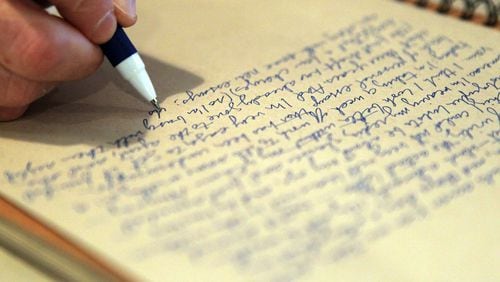In 1947, U.S. historian Wilfred E. Binkley took stock of the 13 men who had been president since the end of the Civil War and reached a stark conclusion: Governorship was “a training school for successful presidents.” The seven ex-governors on the list — including both Roosevelts, Theodore and Franklin — were far more effective chief executives than the six others.
New Jersey Gov. Chris Christie said pretty much the same thing during the recent Republican Governors Association meeting.
“We’re better at it,” Christie told his fellow state leaders. “The American people are done with the experiment of having somebody (as president) who’s never run anything before.” He was preaching to the choir. The list of potential 2016 GOP presidential candidates is dominated by governors. Alongside Christie, there’s John Kasich (Ohio), Scott Walker (Wisconsin), Bobby Jindal (Louisiana), Mike Pence (Indiana) and Rick Scott (Florida). And don’t forget Florida’s former Gov. Jeb Bush and Arkansas ex-Gov. Mike Huckabee (and soon-to-be former Texas Gov. Rick Perry), who are considering presidential runs as well.
But if you look across our nation’s history, it’s hardly clear that former governors make the best presidents. The ranks of governor-turned-presidents include not just the Roosevelts, after all, but also Grover Cleveland, Calvin Coolidge and Jimmy Carter.
After the Civil War, governors started to come into popular favor. In 1876, both parties nominated a governor for president. Although New York Gov. Samuel Tilden won the popular vote, Ohio Gov. Rutherford B. Hayes received the majority in the Electoral College. (It was the Bush v. Gore election of its day.) For 52 of the next 68 years, the Oval Office was occupied by former governors.
State governments in the early 1900s became “laboratories of democracy,” as future Supreme Court Justice Louis Brandeis called them, experimenting with workplace safety regulation and a host of other reforms
But after World War II, experience in Washington came into vogue. All of our chief executives from Truman to Ford were former members of Congress, with the notable exception of ex-Gen. Dwight D. Eisenhower. Amid the national security concerns of the Cold War, voters wanted their commander in chief to be someone who knew their way around the federal government.
The tide would turn again in the 1970s, when the Watergate scandal soured Americans on Washington pols. At the same time the rise of modern conservatism devolved many powers to the states and made “Washington, D.C.” a term of derision and scorn. Starting with Carter in 1976, four of the next five presidents were former governors.
Then came a U.S. senator, Barack Obama, who beat the trend. He defeated a fellow senator (John McCain) the first time around and an ex-governor (Mitt Romney) the next. His party appears likely to select another ex-senator, Hillary Rodham Clinton, to run in 2016.
So despite all the GOP governors lining up to be the presidential nominee, don’t be surprised if Republicans choose a senator with a national profile — say, Ted Cruz, Marco Rubio or Rand Paul.
The scope of the federal government has greatly expanded during the Obama years, including health care, the National Security Agency and the presidential order on immigration. And the more influence that the federal government exerts on voters, the more they see the advantages of a candidate from inside the Beltway. Like it or not, that makes Congress — not the statehouse — the more likely training school for our next president.
About the Author




